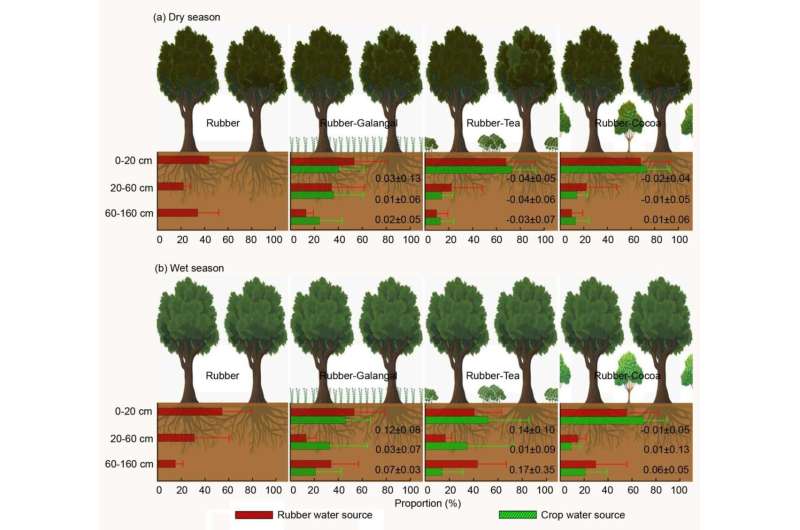Intercrops enhance soil moisture availability in rubber agroforestry systems

Rubber-based agroforestry systems have been developed in Southeast Asia for ecological and economic benefits. However, the water consumption characteristics of different agroforestry practices are still unclear in this region.
In a study published in Agriculture, Ecosystems & Environment, researchers from Xishuangbanna Tropical Botanical Garden (XTBG) investigated the water uptake dynamics and interspecific water interactions for three types of rubber-based agroforestry practices in Xishuangbanna, using the intercrops galangal (Alpinia officinarum), tea (Camellia sinensis), and cocoa (Theobroma cacao).
The researchers investigated the stable isotopes (δD and δ18O), fine root length density, and soil water content (SWC) under three agroforestry practices and one rubber monoculture across a year (2017/2018).
Their results showed that interspecific water competition occurred between the rubber trees and the intercrops during both dry (November-April) and wet (May-October) seasons.
In the dry season, the rubber trees could absorb more shallow soil water where intercrops were present. This indicated that the intercrops enhanced soil moisture availability at the time.
They also observed water competition between the rubber trees and the intercrops in the peak wet season, during which the rubber trees still competed for shallow water resources with the intercrops.
Intercropping increased the available soil water, enabling rubber trees to acquire more (9.4–24.3 %) shallow soil water. The facilitative effects were greatest in the rubber-galangal system followed by the rubber-tea system and the rubber-cocoa system.
"Our findings should encourage the development of rubber-based agroforestry practices in Southeast Asia, which aim to improve soil water management and maximize latex productivity," said Prof. LIU Wenjie, principal investigator of the study.
More information: Bin Yang et al. Intercrops improve surface water availability in rubber-based agroforestry systems, Agriculture, Ecosystems & Environment (2020). DOI: 10.1016/j.agee.2020.106937
Provided by Chinese Academy of Sciences



















